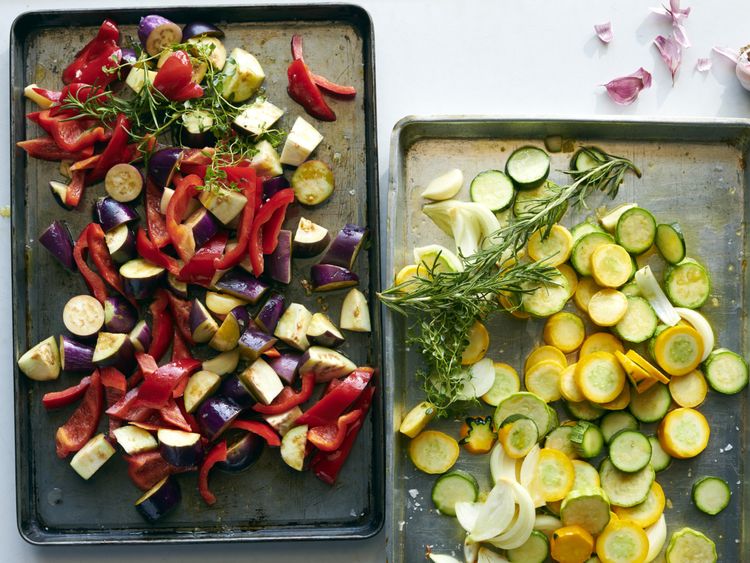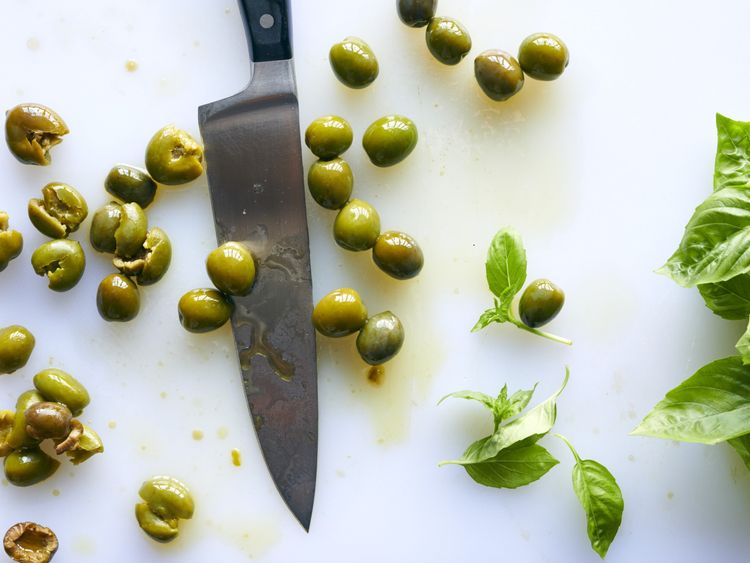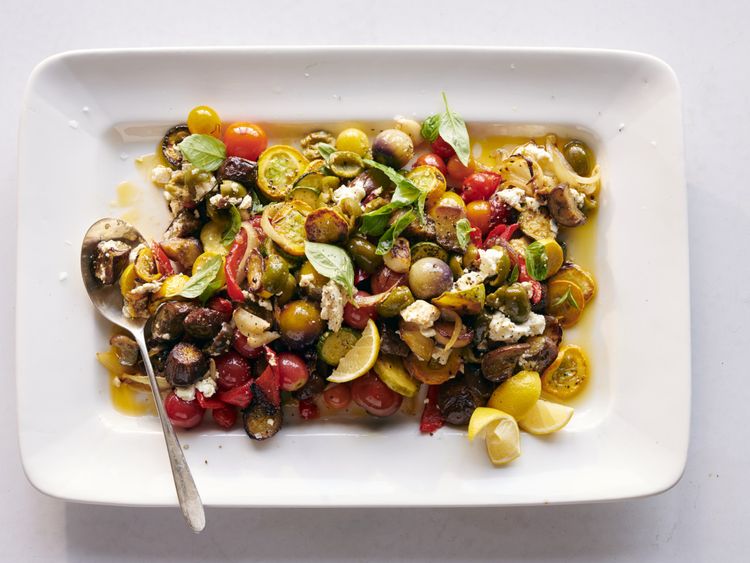Breaking from Julia Child isn’t easy — except when it comes to ratatouille.
For most other French classics, I’ll do whatever Julia, the doyenne of French cuisine, commands, down to blanching, peeling and seeding that very last tomato.
But after spending one too many August afternoons glued to the stove, patiently ministering to each separate pan of eggplant, zucchini, peppers, onion and tomatoes, I finally tried an easier approach to the dish. A chic Parisian told me about sheet-pan ratatouille, a streamlined take that many French cooks have embraced.
Just as in the classic stovetop version, the vegetables cook on a sheet pan, softening and gracefully absorbing generous amounts of olive oil while their juices mingle, turning fragrant and complex. In the oven, there’s an added layer of caramelization and browning that’s just not possible in a high-sided pot.
Even better, although the recipe still takes some time to cook, I don’t have to stand there tending it, allowing me to leave the kitchen for cooler, more air-conditioned rooms.
I often serve ratatouille with some sharp cheese or olives as contrasts to the sweet silkiness of the vegetables. In this recipe, I took those same ingredients and threw them into the pan. This gives the cheese a chance to melt and lets the olives bathe in all the oily vegetable juices, becoming plumper and tangier as they heat up.
You can use any kinds of olives and cheese here. I chose creamy goat cheese and herbal, saline Castelvetrano olives. I’ve made this with chunks of fresh mozzarella and inky black Kalamata olives, and it’s equally wonderful. There’s a sheet-pan ratatouille topped with a thick, stretchy cap of grated cheddar in my very near future. I might even broil it for a minute or two, until the cheddar singes and crisps.
I love pairing ratatouille with a fresh green salad and some baguette. In the thick heat of summer, that’s all I need to make a meal.
If you’re looking for something more substantial, serve it with grilled or roasted meat or fish. Or take advantage of the running oven to roast a cut-up chicken along with the vegetables. It makes for a meal that’s both practical and extremely tasty — something Julia Child could always get behind. —————————————
Recipe: Sheet-Pan Ratatouille With Goat Cheese and Olives Yield: 4 to 6 servings Total time: 1 1/2 hours
Ingredients 1 large onion, halved and thinly sliced 1 3/4 pounds zucchini, cut into 1/4-inch slices (about 7 cups) 1/2 cup plus 1 tablespoon extra-virgin olive oil, plus more for serving 6 thyme sprigs 4 rosemary sprigs 6 garlic cloves, smashed and peeled Fine sea salt, as needed 2 pounds eggplant, cut into 1-inch cubes (about 10 cups) 2 medium red bell peppers, sliced into 1/2-inch slices (about 3 cups) 3 cups cherry tomatoes (12 ounces) 8 ounces goat cheese, crumbled 3/4 cup Castelvetrano or other good-quality olives, crushed, pitted, and torn into pieces Lemon wedges, for serving 1/2 cup basil leaves, sliced
Method 1. Heat oven to 425 degrees, and arrange two racks in the top and bottom thirds.
2. On one rimmed 13-by-17-inch sheet pan, toss together onion slices, zucchini, 1/4 cup oil, 3 thyme springs, 2 rosemary sprigs, 3 garlic cloves and 1/2 teaspoon salt.
3. On a second rimmed baking sheet, toss together eggplant, red peppers, 1/4 cup oil, 3 thyme sprigs, 2 rosemary sprig, 3 garlic cloves and 3/4 teaspoon salt.
4. Place one tray on the top rack, and a second on the bottom rack of the oven. Roast both for 40 minutes, stirring vegetables two or three times.
5. Add tomatoes to the baking sheet with eggplant and peppers, then continue to roast until the tomatoes burst and the zucchini turn deeply golden brown, another 20 to 25 minutes. The vegetables will become very caramelized, and that’s a good thing, particularly with the zucchini and onions.
6. Transfer zucchini and onions to the baking sheet with eggplant, mix well, and spread in an even layer (it will just fit). Drizzle vegetables with another 1 tablespoon oil, then sprinkle goat cheese and olives over the top. Roast until goat cheese is soft and warmed through, 5 to 10 minutes.
7. Transfer vegetables to a serving platter, drizzle with a little more oil and squeeze juice from the one of the lemon wedges over the top. Garnish with basil leaves. Serve hot or warm, with more lemon wedges on the side.
















